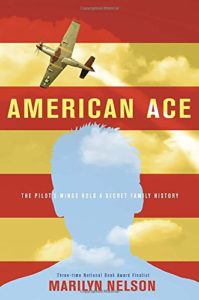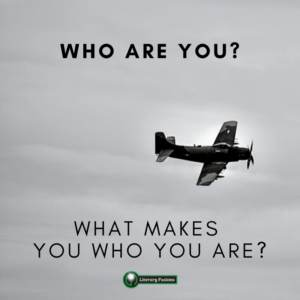Why I Picked It Up: This was a last minute addition to our Newer Choices in YA Lit for a literacy conference in Fort Worth last year. I think it had airplanes on it, so Jessica thought it must be a me book. It’s fun how we seemingly randomly assign books to each other that we end up loving!
Why I Finished It: This novel in verse was a really quick read, but it was incredibly substantial. A quick read certainly won’t do it justice. The story is about an Irish-Italian teenager discovering a twist in his family tree – it certainly drew me in! Though it’s a short book, the characterization is strong, which pulls the story along. Of course, since it’s short, much of the depth of the characterization comes from inferences.
I loved the historical component of American Ace as well, and the idea of heritage. Many times, we think about history as something that happens to other people, but as Connor starts learning about his family, the abstract “history” becomes personal, real and relatable.
Who I’d Give It To: Because of the format, upper-middle or high school students would probably be able to get the most out of American Ace.
Integration Ideas
Theme – Identity
This book poses lots of questions of how identities are shaped and formed and who forms them – is it society? Is it family? Is it DNA? Just who are we, anyway?
“It’s funny to think about identity. I wonder how much of us we inherit, and how much we create.” p 19
Connor’s dad decides to do a DNA test and, on page 75, gets the results back. The breakdown of the percentages of nationalities is very interesting. (If the students aren’t familiar with the regions, it would be a great time to incorporate some map skills!) Based on what we know about Connor and his family, what stands out to the students from this list of regions? His dad’s reaction to the new knowledge of his heritage is also food for thought:
That’s SIX more peoples, not just one or two!
So Ace connects us to the larger world!
Just imagine how all those people met.
Connor’s reaction is interesting too (pg 75)! How does he feel about his heritage personally? How does that change how he interacts with the world around him? Page 117, “Beyond Skin,” also depicts how Connor’s research has given him a new perspective about people and the world around him.
Contrast the reactions of Connor and his dad to the reactions of the rest of the family:
- Aunt Kitty – p 25
- Uncle Joe – p 25, 43
- Connor’s Mom – p 27
- Carlo (Connor’s half brother) and his family – pg 79, 117
Finally, speaking of different perspectives, don’t miss the author’s note in the back. It’s called “How This Book Came to Be and Why an Older African American Woman Ended Up Writing as a Young White Man.”
Theme – Grief/Loss
Dealing with loss is a sub-theme in this book. Part One of the story shows how Connor’s dad is dealing with the loss of his mother, Nonna Lucia. However, after reading through the whole story, you can also see how he’s dealing with more than just the physical death of his mother. He’s also dealing with the loss of what he thought was his identity. The rest of the story shows the journey of coming to terms with a new reality.
When looking at the various reactions of the family to the news (page numbers above), you could also look at how different people handle loss differently. There are also many books for young adults that have a character dealing with loss. It would be interesting to have students compare and contrast Connor’s dad to other characters.
Social Studies/Research
The obvious connection here! Connor and his dad begin to research the ring and the words inscribed inside it, and his wise mother directs them to a research librarian who is able to pull primary source documents, such as a yearbook! Connor also does research for his honor’s thesis on the Tuskegee Airmen. There are lots of primary source documents from this time period available. Check out the Library of Congress and the National Archives.
Parts Seven and Eight of the book are Connor’s thesis on the Tuskegee Airmen and it does a good job of giving broad information. This is a great curiosity-sparker for those students who might find themselves interested in a lesser-known and under-celebrated aspect of WWII.
Poetry
Another obvious connection! This novel-in-verse reads quickly, but a quick read wouldn’t do it justice.
Study the structure. The book is divided into nine parts, with five “chapters” in each. Each page is a chapter, with a unique title. On my first read, I didn’t really pay attention to the chapter titles, but they are definitely important to the story! The Table of Contents gives a nice overview of these titles. How does this Table of Contents reflect the content of the story? What is the relationship between the chapter title and the text of the chapter? In Parts Seven and Eight, the titles tell a completely different story, a parallel story, to the one in the text. It’s so cool!









Leave a Reply